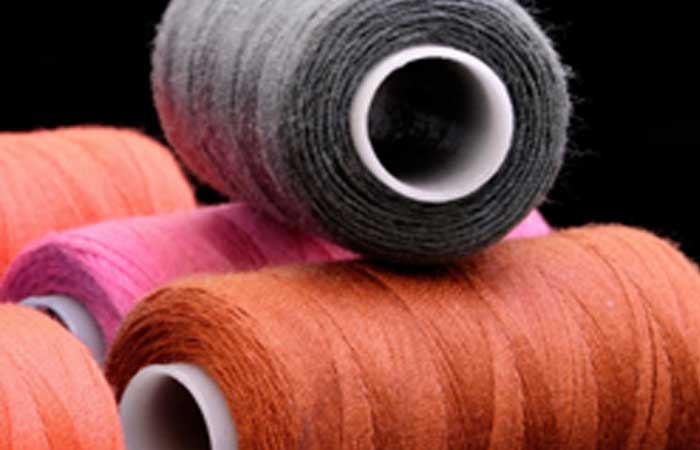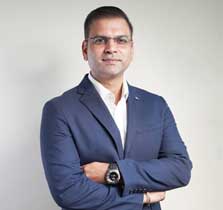
A Roadmap for T&A Revival
Integrating digital technologies like CAD/CAM, virtual prototyping, and AI-powered design tools can accelerate product development, enhance customisation, and enable better consumer engagement, says Vikram Rewar.
India, with its rich history and diverse culture, has always been synonymous with textiles. From the vibrant silk sarees of Banaras to the intricate handloom weaves of Kerala, Indian textiles have captivated the world for centuries. However, the industry faces significant challenges in the 21st century, requiring a comprehensive strategy for rejuvenation. As the Business Head – Textiles at Rossari Biotech, a company deeply invested in the textile industry’s future, believes that India has the potential to reclaim its position as a global textile leader.
This article delves into the current state of the Indian textile and textile engineering industry, highlighting the challenges it faces, and exploring potential solutions for a vibrant future.
A tapestry of challenges
Despite its heritage, India’s textile and textile engineering industry faces numerous challenges:
- Competition from global players: The rise of global fast fashion brands and low-cost manufacturing hubs has intensified competition, impacting domestic players, particularly in the readymade garment segment. This aggressive competition has forced Indian manufacturers to constantly strive for cost-effectiveness and efficiency.
- Technological gap: The industry lags in adopting advanced technologies like automation, robotics, and digital manufacturing, hindering its competitiveness and ability to meet evolving consumer demands. This technology gap translates into slower production cycles, lower efficiency, and limited access to innovative materials and processes.
- Infrastructure deficiencies: Limited access to reliable and affordable electricity, inadequate transportation infrastructure, and fragmented supply chains hinders efficiency and competitiveness. These logistical challenges result in higher production costs and make it difficult for Indian manufacturers to meet deadlines and global standards.
- Skill gap: The industry suffers from a shortage of skilled manpower, particularly in technical fields like textile engineering, design, and manufacturing. The lack of quality training programs and inadequate industry-academia collaborations exacerbate this issue. The absence of a well-trained workforce hinders the implementation of new technologies and limits the industry’s potential to innovate.
- Sustainability concerns: Traditional textile production practices often utilise environmentally harmful dyes and chemicals, leading to pollution and resource depletion. These unsustainable practices damage the environment, raise consumer concerns about ethical sourcing, and create a negative perception of the Indian textile industry.
- Lack of innovation: Despite the rich tradition of craftsmanship, the industry faces challenges in adapting to new trends and developing innovative products, leading to stagnant growth, and limited global appeal. The lack of innovation makes it difficult for Indian textiles to compete with the ever-changing demands of the global fashion market.
- Policy fragmentation: Existing government policies often lack coherence, leading to bureaucratic hurdles and inconsistencies in implementation, hindering industry growth and investment. These inconsistencies create uncertainty for businesses, discouraging investment and hindering overall development.
Weaving a path forward: Role of research and development
To address these challenges, a multifaceted approach is required, with research and development playing a critical role in driving transformation. At Rossari Biotech, we strongly believe that innovation is key to unlocking the industry’s potential.
- Innovation in Materials and Processes: Research and development efforts should focus on developing innovative materials like sustainable and eco-friendly fibres, and exploring advanced textile processing techniques like nanotechnology, bio-processing, and 3D printing.
- Smart Manufacturing and Automation: Investing in research and development of smart manufacturing systems, automation technologies, and robotics can enhance productivity, reduce costs, and improve quality control. This shift towards Industry 4.0 practices is crucial to enhance competitiveness and create a more efficient and sustainable production environment.
- Digitalisation and Design: Integrating digital technologies like CAD/CAM, virtual prototyping, and AI-powered design tools can accelerate product development, enhance customisation, and enable better consumer engagement. This digital transformation can open new avenues for innovation, personalisation, and faster response to changing fashion trends.
- Sustainability Research: Investing in research and development of sustainable textile production methods, including eco-friendly dyes, natural fibre processing techniques, and waste management solutions, is crucial to minimise environmental impact. This focus on green technologies is essential for building a sustainable future for the textile industry and ensuring its long-term viability.
Government policies & initiatives
Government policies and initiatives are essential for creating a conducive environment for industry growth and innovation. Clear and consistent policy frameworks are crucial to guide investment, promote technological adoption, and drive overall development.
- Textile policy framework: A comprehensive and integrated textile policy is crucial, providing clear guidelines for investment, infrastructure development, and skill development. This policy framework should encourage innovation, incentivise sustainability, and streamline bureaucratic processes to create a favourable environment for the industry.
- Financial incentives: Attractive incentives, tax benefits, and subsidies can encourage investment in research and development, automation, and green technologies. Financial support can provide a much-needed boost to innovation, particularly for small and medium-sized enterprises (SMEs) who are the backbone of the Indian textile industry.
- Infrastructure development: Focus on improving infrastructure, particularly in textile hubs, including access to electricity, transportation networks, and logistics facilities. A robust infrastructure will create a more efficient supply chain, reduce transportation costs, and improve access to essential resources.
- Skill development programs: Investing in industry-specific skill development programs, including vocational training, apprenticeship programs, and upskilling initiatives, is crucial to bridge the skills gap. Investing in education and training will equip the workforce with the skills necessary to adapt to new technologies and meet the evolving demands of the industry.
- Promoting sustainability: Incentivising sustainable production practices, promoting eco-labels, and implementing stricter environmental regulations can incentivise responsible manufacturing. Promoting sustainability will not only benefit the environment but also enhance the brand image and competitiveness of Indian textiles in the global market.
- Facilitating innovation: Creating dedicated research and development centres, fostering collaboration between industry, academia, and government, and promoting public-private partnerships can drive innovation and technology adoption. Creating a collaborative ecosystem for innovation will accelerate the development and adoption of new technologies and drive the industry forward.
Embracing sustainability
Sustainability is no longer a niche concern but a core principle for the future of the textile industry. At Rossari Biotech, we are committed to promoting sustainable textile manufacturing practices.
- Circular economy: Adopting a circular economy model, focusing on resource efficiency, waste reduction, and recycling, is critical for sustainable textile production. This shift towards circularity will minimise resource depletion, reduce environmental impact, and create a more sustainable business model.
- Sustainable dyes and chemicals: Moving away from toxic dyes and chemicals towards eco-friendly alternatives, using natural dyes and plant-based chemicals, is vital. Developing and adopting environmentally friendly chemicals and dyes is a critical step towards sustainable textile production.
- Organic cotton and natural fibres: Promoting the use of organic cotton and other natural fibres, reducing pesticide and chemical usage, and ensuring ethical sourcing practices contribute to environmental sustainability. Promoting the use of organic and natural fibres will reduce the environmental footprint of textile production and create a more ethical and sustainable supply chain.
- Green manufacturing processes: Implementing energy-efficient manufacturing processes, reducing water usage, and investing in renewable energy sources are crucial for sustainable operations. Adopting green manufacturing practices will not only reduce environmental impact but also create a more cost-effective and efficient production environment.
- Waste management and recycling: Developing robust waste management and recycling systems, including innovative recycling techniques for textile waste, is essential for a circular economy approach. Implementing efficient waste management and recycling systems will minimise waste generation and create a more sustainable and resource-efficient textile industry.
Skill development and capacity building
Developing a skilled and competent workforce is critical for the industry’s rejuvenation. Investing in human capital is essential to equip the industry with the talent it needs to compete in the global market.
- Vocational training: Expanding and strengthening vocational training programs, focusing on practical skills relevant to textile manufacturing, design, and engineering, is essential. Vocational training programs should be aligned with industry needs, providing trainees with the skills required to excel in the modern textile industry.
- Apprenticeship programs: Enhancing industry-led apprenticeship programs to provide hands-on experience and equip trainees with industry-specific skills. Apprenticeships provide valuable practical experience and allow trainees to gain valuable skills under the guidance of experienced professionals.
- Upskilling and reskilling: Investing in upskilling and reskilling programs to enhance the existing workforce’s skills and adapt them to emerging technologies and sustainable practices. Upskilling and reskilling programs are crucial to ensuring that the existing workforce has the skills necessary to thrive in the evolving textile industry.
- Industry-academia collaboration: Strengthening partnerships between textile companies and educational institutions to develop relevant curriculum, conduct research, and provide internships for students. Industry-academia collaborations will bridge the gap between theoretical knowledge and practical skills, preparing graduates for the demands of the textile industry.
- Skill development centres: Establishing dedicated skill development centres equipped with modern technologies and experienced trainers to provide comprehensive training programs. Skill development centres will provide a structured environment for training and upskilling, ensuring that the workforce is equipped with the skills required to excel in the modern textile industry.
A vibrant future
The textile and textile engineering industry holds immense potential for growth and prosperity. By embracing innovation, sustainability, and skill development, India can reclaim its position as a global leader in textiles.
- Emerging trends: The industry can leverage emerging trends like personalised fashion, smart textiles, and functional fabrics to develop niche products and cater to evolving consumer demands. Embracing these trends will enable the industry to create innovative products that meet the needs of the modern consumer.
- Global market access: Focusing on niche markets and developing high-quality, sustainable products can enhance export potential and contribute to global market share. Targeting niche markets and focusing on high-quality products will enable Indian textiles to compete effectively in the global market.
- Digital transformation: Embracing digital technologies like e-commerce platforms, online marketplaces, and social media marketing can create new opportunities for growth and reach wider customer bases. Digital transformation will allow businesses to reach a wider audience, connect with consumers online, and enhance their marketing and sales efforts.
- Sustainable supply chains: Developing transparent and traceable supply chains, ensuring ethical sourcing, and promoting fair labour practices can enhance brand reputation and customer loyalty. Building sustainable and ethical supply chains will improve brand perception, attract environmentally conscious consumers, and create a more responsible and sustainable textile industry.
- Government Support: Continued government support through favourable policies, financial incentives, and infrastructure development is crucial for sustained growth and investment in the industry. Government support is essential to provide the necessary impetus for innovation, sustainability, and skill development, ensuring a vibrant future for the Indian textile industry.
Weaving a new narrative
Rejuvenating India’s textile and textile engineering industry requires a multi-pronged approach. By focusing on research and development, embracing sustainability, fostering skill development, and leveraging government support, the industry can transform into a vibrant and competitive sector, contributing significantly to India’s economic growth and global competitiveness.
As a company deeply invested in the textile industry’s future, Rossari Biotech is committed to driving innovation and sustainability in the textile sector. We believe that by embracing these principles and working collaboratively, we can create a brighter future for the Indian textile industry and help it reclaim its rightful place as a global leader. The journey ahead requires collaborative efforts from industry players, government agencies, academic institutions, and individuals. It’s time to weave a new narrative of innovation, sustainability, and empowerment, ensuring a bright future for India’s textile industry.
About the author:

Vikram Rewar, Business Head – Textiles, Rossari Biotech has an experience of over 20 years in defining long-term organisational strategic goals, building key customer relationships, identifying business opportunities, and negotiating & closing business deals, in Indian and overseas market. Rossari Biotech is an Indian chemical manufacturing company with a focus on specialty chemicals.




